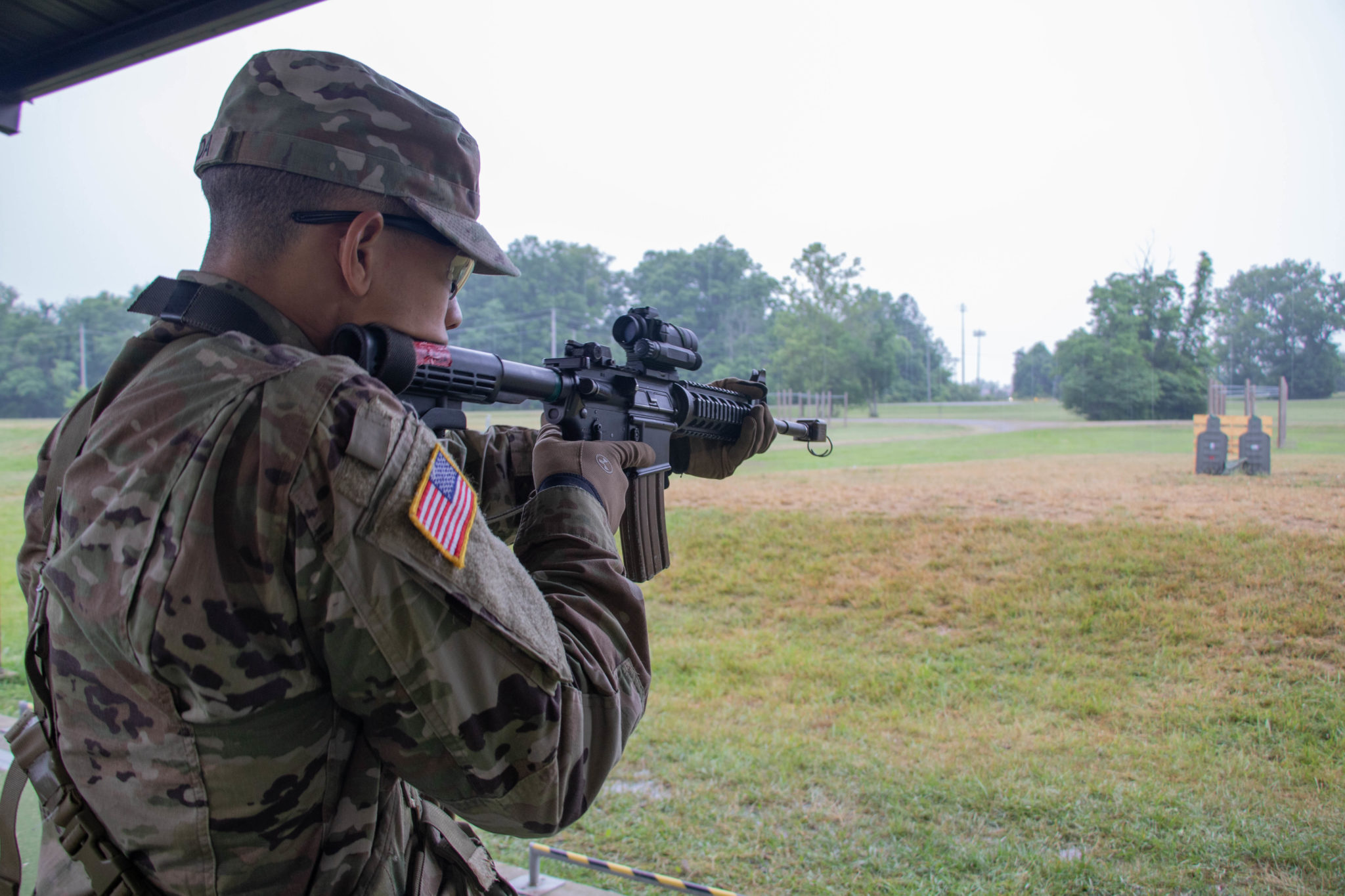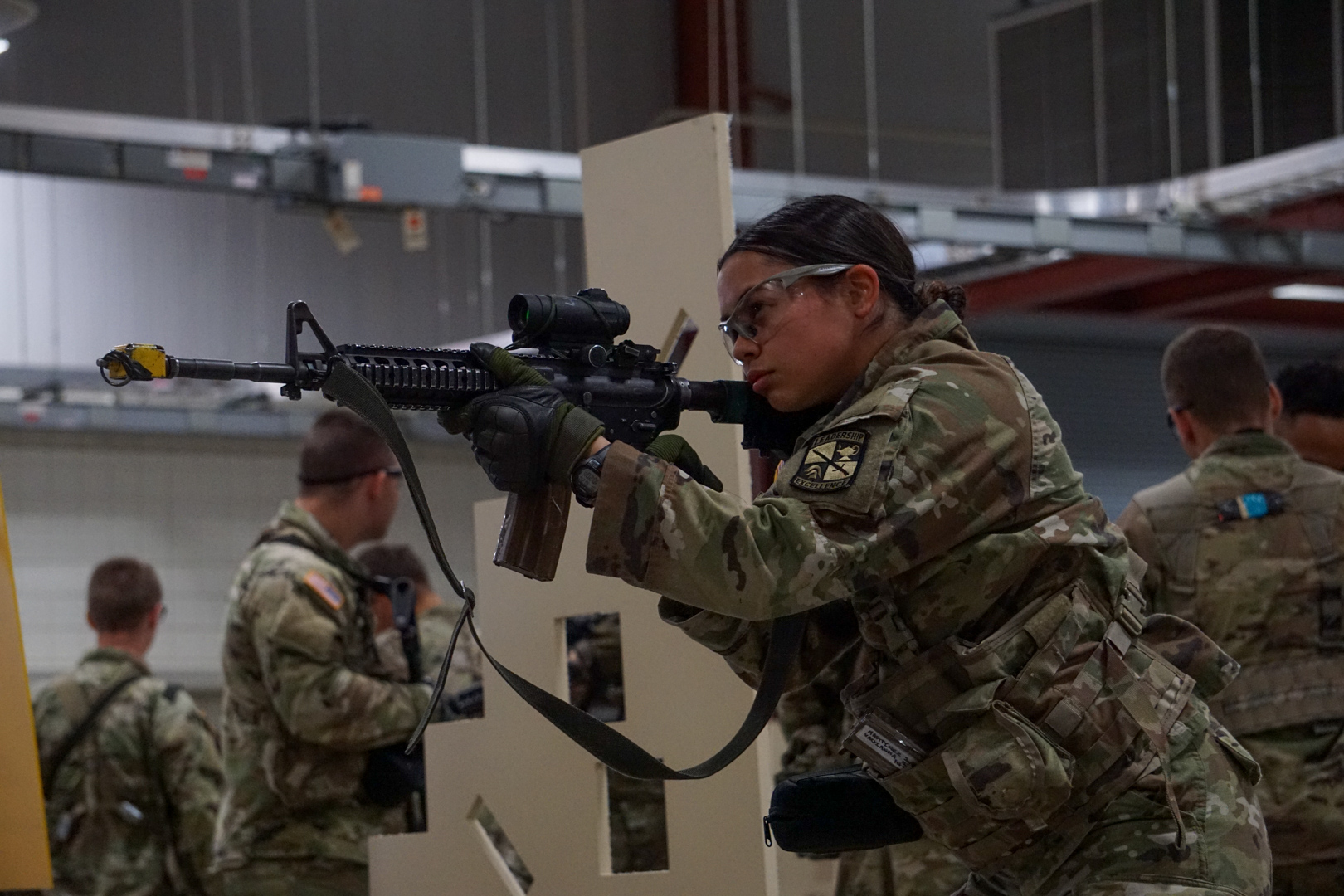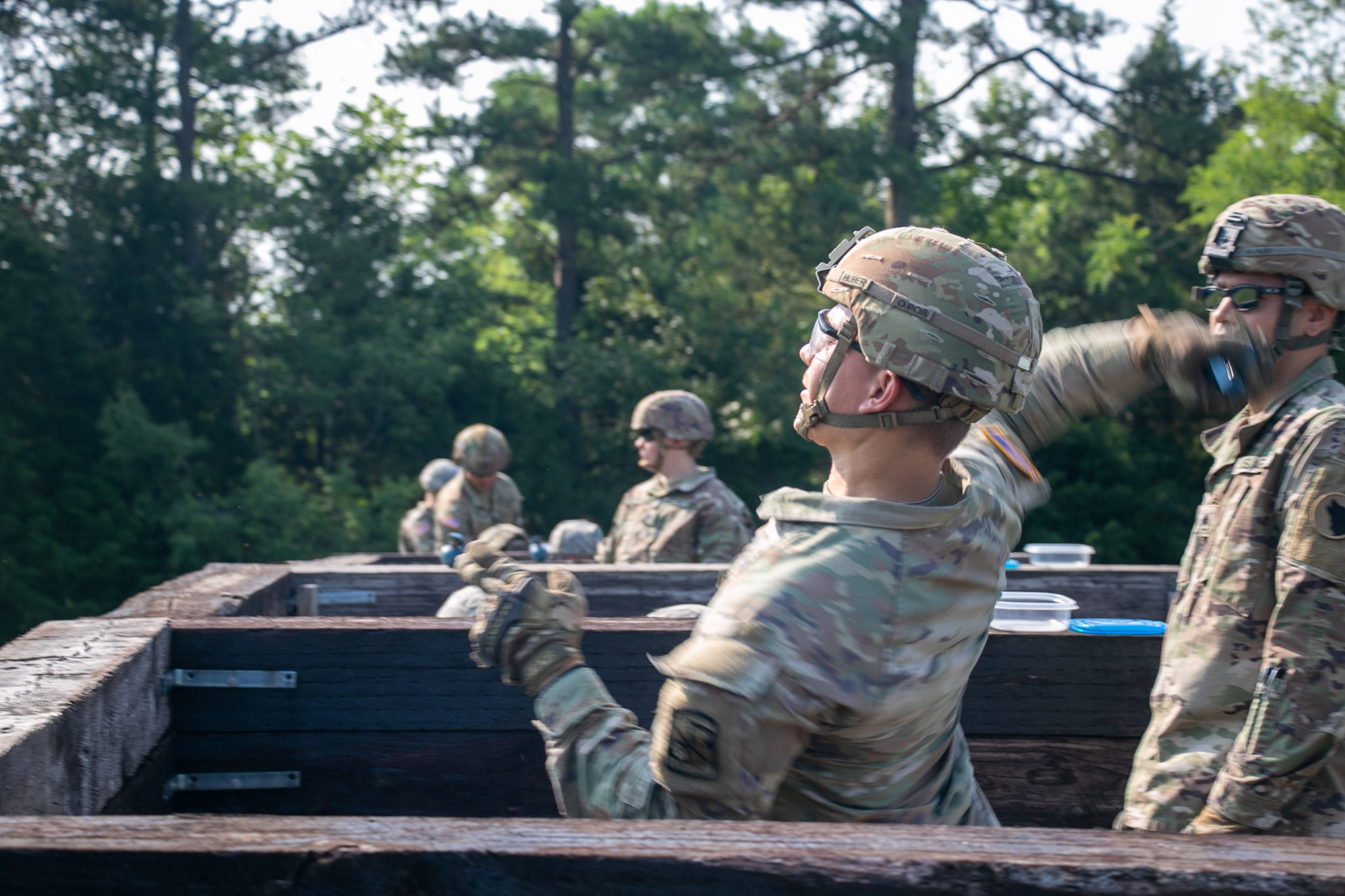On April 22, 1915, German troops wrote a gruesome new chapter in the book of modern warfare with the deployment of poison gas on the unsuspecting Allied troops defending Ypres, Belgium. Since then, the use of chemical, biological, radiological and nuclear weapons became widespread among nations and have been used as recent as the 1990s when Iraqi forces deployed Nerve Agents and CS Gas against its own population to control a popular uprising.
To prevent a repeat of the Ypres attack, the U.S. Military developed the Mission Oriented Protective Posture (MOPP) and trained its troops in the effective reaction against the enemy use of Chemical, Biological, Radiological and Nuclear (CBRN) weapons.
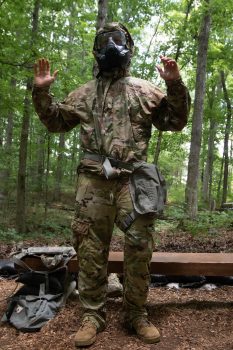
During the CBRN event at Fort Knox, Ky., Cadets from 6th Regiment, Advanced Camp, learned how to react in an effective and timely manner in case of enemy deployment of these weapons. The Friday event combines a series of training simulations that end with a visit to the confidence chamber.
“It is extremely important because our adversaries have capabilities that are a threat to us,” said Nathan Crow, a Cadet from the University of Texas at San Antonio, “We need to make sure we stay on top of our CBRN training.”
Cadets started their training by learning how to properly use their gas masks. This included a comprehensive lesson on the proper fit, storage and wear of the mask. Once Cadets were comfortable with their use of the mask, they moved on and learned how to don the remaining items of their MOPP gear.
After multiple training repetitions, Cadets had to put knowledge into practice and don their entire MOPP gear set in under eight minutes in order to qualify for the event. Once they received a passing mark, Cadets started preparing for the most physically and mentally demanding portion of the training: the confidence chamber.
“I was nervous, I think everyone was a little bit nervous. We didn’t know what to expect,” said Tally Darsonval, a Cadet from the University of California, Santa Barbara.
The confidence chamber is filled with CS Gas, a common riot control agent that causes eye pain, chest tightness, sneezing, a burning sensation on the skin and throat, and increases nasal secretions. Cadre uses the opportunity to teach Cadets to trust their MOPP gear.
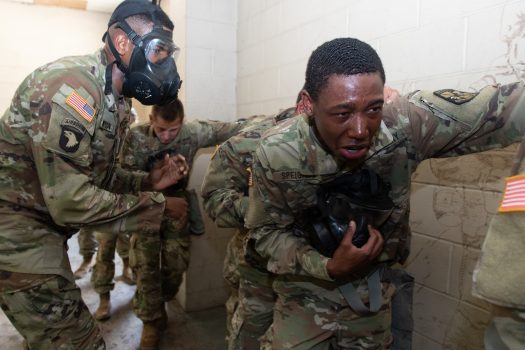
According to Darsonval, being together with her battle buddies and picking something to distract her mind helped her fight through the pain of the CS gas. “We were singing Happy Birthday, and I was really focusing on being as loud as I could.”
For Cadet Aryanna Huffnagle, Coppin State University, the CBRN event also left her with a new-found sense of accomplishment. “I think it’s made me a stronger person. I’m doing things I’ve never done before and I can just go back to my family and tell them that if you put your mind to it you can do anything.”

